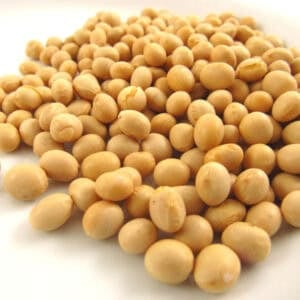
We get mordant questions all the time at Botanical Colors so why not create Mordant Monday??? Got mordanting questions? Email [email protected]
YOU ASKED: I am working with earth pigments specifically clay. I am trying to wrap my head around the use of soy as a binder/mordant. Is a coating of soy necessary as an initial application? Then using pigment. Mixed with soy as design than a coating of soy over the whole dried material? Or what??
KATHY ANSWERED: Soy is used as a binder, a “glue” really, to attach clay and earth pigments to a fabric surface. It is not considered a mordant as it has a different chemical process. Soy milk acts as the glue to physically hold the pigment to the surface of the textile, and mordants create a chemical bond. You can pre-treat the fabric with soymilk by brushing a light and even coat of prepared soymilk before applying the pigment. You can also mix the earth pigment powder with soymilk for additional binding power and apply it. Once you have applied your pigments, the soy creates a bond that strengthens over time. John Marshall recommends a cure time of 3 months for the soy to completely bond with the fibers and pigments. He has an entire book called Salvation Through Soy dedicated to the use of soymilk as a textile auxiliary as it has been used in Japan for centuries as a textile binder.
You can even lightly brush a soymilk layer over the dried design. All of these methods will work to attach the clay pigment to the fiber and you can choose the method that works best for you.
Please note that a soymilk binder alone will not attach a pigment to fabric strongly enough for washable items, such as a t-shirt. However, soymilk is a valuable tool as a binder and also enhances colors for dyes on cellulose fibers. If you are interested in diving down this rabbit hole, we have a few links for your to explore.
Brittany Boles of Seaspell Fibers offers an online workshop called Fresh Indigo 5 Ways that discusses how to use soymilk and fresh leaf indigo to dye cellulose fibers.
Natalie Stopka also teaches about enhancing lake pigments (pigments made from dyes) with soymilk. You could explore her site and see if there are techniques there that will add to your methods and practice.



